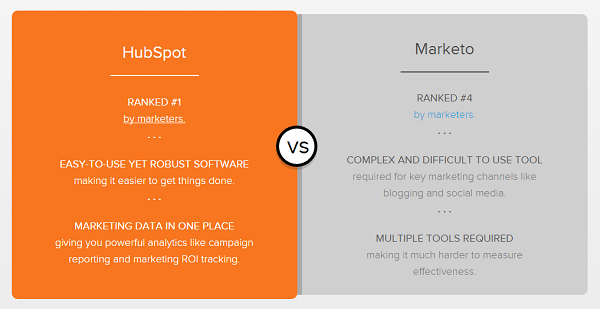Marketing a new SaaS product isn't easy. In one fell swoop, you're trying to attract potential customers to your business, fend off competitors, grow your marketshare and displace existing solutions.
Under these high-pressure conditions, mistakes are damaging, and open up gaps for competitors to swoop in, taking marketshare before you have a chance.
Today, I'm looking at 5 of the most common mistakes businesses make when marketing new SaaS products - and show you how to avoid them, growing your product's marketshare.
1) Marketing to People That Shouldn’t Use Your SaaS
It’s important to attract people to your SaaS marketing website – but it’s more important to attract the right people.
A broad-brush approach to marketing will attract both relevant and irrelevant people to your product. Though they’ve responded to your marketing strategy, and may even engage with your product, these irrelevant people won’t engage with the only part of the process that really matters – sales.
They’re unlikely to ever reach a point of sales qualification. Those that do will be hard to sell to, and difficult to deal with post-sale.
Long-term, attracting the wrong types of people can distort future decisions about product development, plague your company with customer support issues, and even damage your reputation.
To attract the right people, you need to identify your SaaS product’s buyer personas, and design each and every one of your marketing tactics to attract these types of people to your business.
2) Not Recognising the Evolving SaaS Buying Process
Imagine you’re looking for a simple and intuitive cloud-based accounting platform. To get an idea of the type of functionality available, the different price points and potential vendors, you need to kick-off the buying process with a bit of research.
So where would you conduct that research?
Would you trust the advice of paid advertisements? Would you heed the words of direct mail, or a cold email? Or would you start with a Google search, moving on to industry blogs, even asking for recommendations from your peers?
With a wealth of knowledge, advice and opinions at our fingertips, the software buying process has fundamentally changed. An estimated 67% of the B2B buying process takes place online, and over half of B2B buyers start the buying process with informal research, using search engines, vendor blogs and social media to inform their decisions.
Your SaaS marketing strategy needs to recognise this shift. Instead of relying on outdated, invasive and ineffective strategies, you need to develop a marketing strategy that can attract, educate and nurture potential customers.
3) Failing to Acknowledge Your Competitors
Product and service comparisons are a crucial part of the SaaS buying process, with consumers researching potential vendors, and directly comparing their features, functionality and cost.
We can turn a blind eye to this process, and hope that consumers will see the merits of our own software – or we can adopt a proactive stance, and make it quick and easy for potential customers to make these comparisons.
After all, any successful product, yours included, will have a unique value proposition – characteristics and features that set the product apart from its competitors. These characteristics are especially pronounced in the ultra-disruptive SaaS sector, where innovative new software services are developed as a direct response to the established tools and methodologies currently in use.
By highlighting your unique value proposition, and drawing direct comparisons to your competitors, you make it easy for potential customers to weigh-up different vendors, and focus attention on your unique position as a one-of-a-kind software solution.
HubSpot have adopted this approach, creating entire pages dedicated to direct competitor comparisons.

‘But wait!’ I hear you cry, ‘Our new software doesn’t have any direct competitors!’ In this instance, you need to highlight exactly why you don’t have any competitors – and point out the revolutionary differences between your SaaS solution, and the established solution. There's always a competitor, whether it's an established SaaS behemoth, or excel spreadsheets.
4) Under-Investing During Initial Traction
There are typically four stages to successfully growing SaaS products - Pre-Traction, Initial Traction, Initial Scale and Scale - and it’s essential that your marketing strategy reflects the different needs of each of these stages.
Perhaps the biggest SaaS marketing mistake is under-investing during the initial traction phase. At this stage, your business can expect to be turning over £1-£5 million, with revenue growing 100%+ year-on-year – but instead of slowing down your marketing investment, initial traction is the time to accelerate your marketing efforts.
Some SaaS solutions reach initial traction, and begin to sit on their laurels. Marketing investment relaxes, and growth begins to stagnate - creating the perfect opportunity for a competitor to displace you.
Successful products tend to be those that invest heavily into marketing during initial traction, raising further finance to fuel aggressive growth – cementing their market share by securing as many right-fit customers are possible.
5) Waiting Too Long to Partner with a Specialist
At the start of the long road towards market domination, you may be tempted to manage your marketing efforts in-house (usually in an effort to control costs).
Crucially though, establishing explosive growth and rapid marketshare is easier when you have access to established, proven processes & experienced SaaS marketing experts. Building an in-house team from day one requires long-term hiring decisions, a broad range of specialised skill-sets, and a whole ton of trial-and-error. In contrast, partnering with a SaaS marketing specialist means:
- Expert guidance and proven processes.
- An easily scalable framework.
- A track record of growing other software solutions.
- Tightly controlled costs (paying for deliverables – not employees).
- No overhead from managing employees and freelancers.
- A smaller commitment.
Developing some capabilities in-house usually makes sense – but at all stages of the SaaS growth journey, access to expert guidance, proven processes, highly trained specialists and broad experience can make the difference between success and failure.




